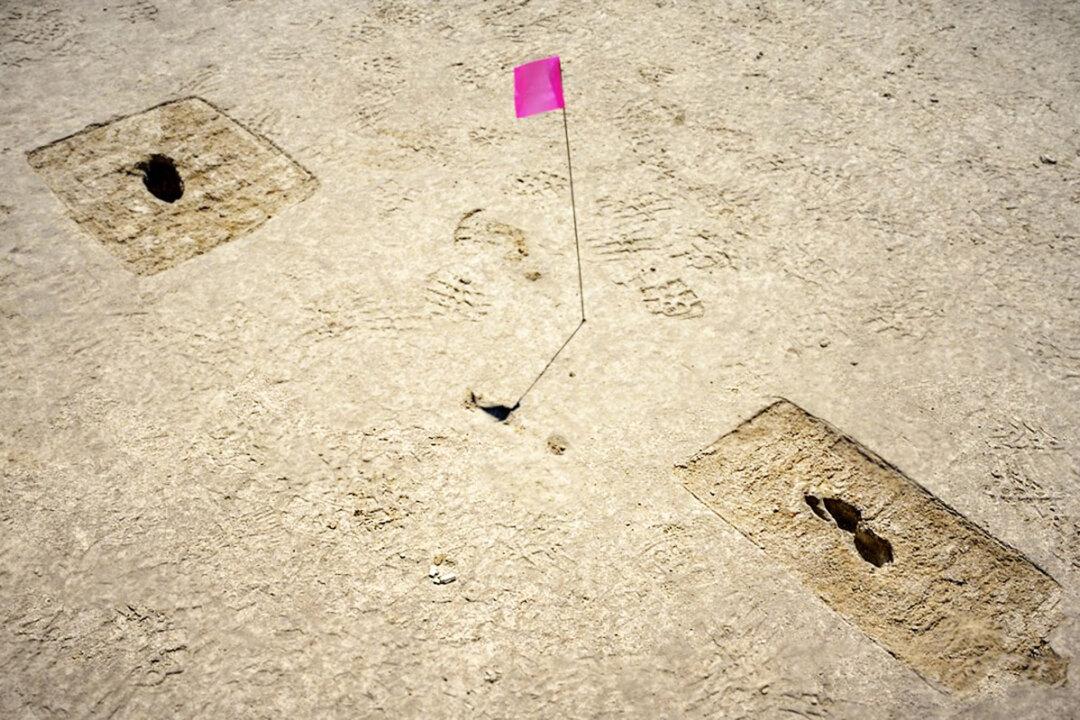Researchers in the salt flats of Utah were driving to a prehistoric open-air hearth site when they spotted what were determined to be unshod human footprints dating back to the late stage of the ice age, some 12,000 years ago.
Located in the Air Force’s Utah Test and Training Range (UTTR), the tracks were picked out by Thomas Urban, from Cornell University’s Tree-Ring Laboratory. Stopping to look, they saw what are called “ghosts tracks”—footprints that appear suddenly for a short time, when moisture conditions are just right, before disappearing.






